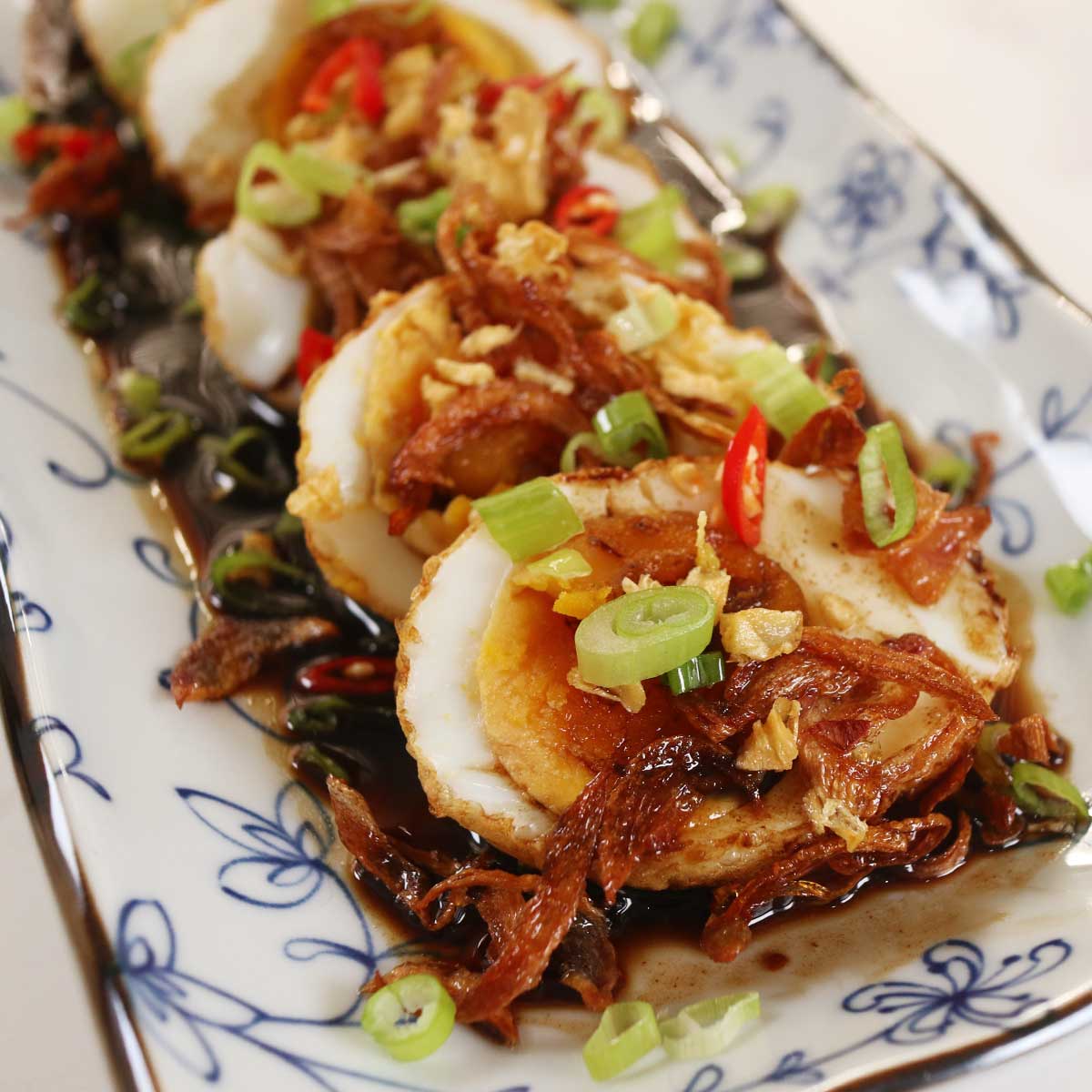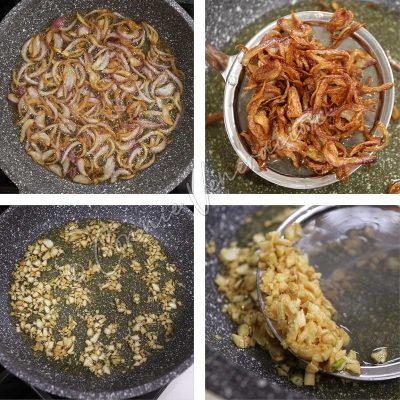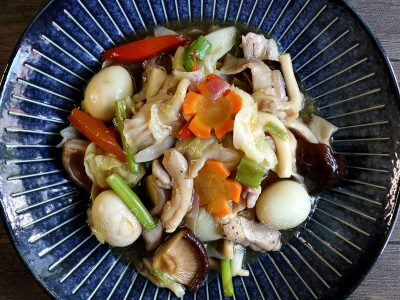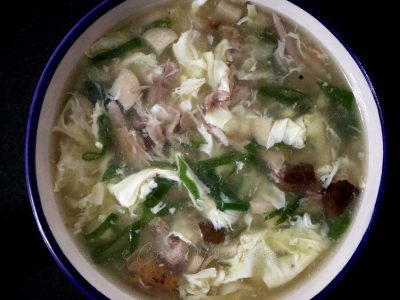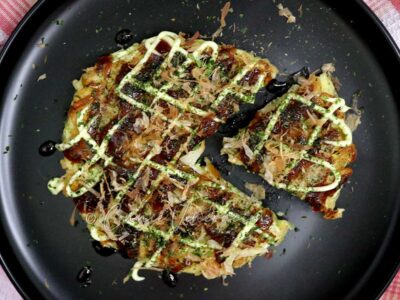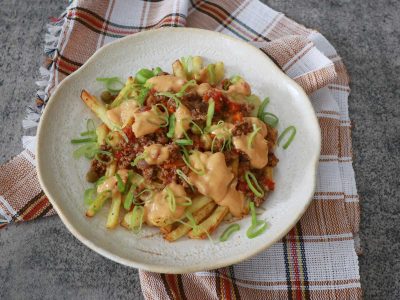What makes them so good? The explosion of flavors, to start with. The sauce itself is a wonder to behold. Even if you’ve had sweet and sour sauce dishes before, just wait until you try a version made with tamarind paste. Sour but not as acidic as vinegar with a lovely fruity aroma and flavor.
Then, there’s the texture of the eggs. When a boiled egg is deep fried in smoking hot oil, the surface blisters as it browns. On the plate, this browned and blistered exterior is at once crispy and chewy. The mouth feel is just incredible.
But why is the dish called son-in-law eggs? I know, right? The name conjures something gruesome. There are at least two stories as to the origin of the name of the dish.
The flustered son-in-law
One storygoes that while a wife was on vacation, her mother visited her home and the husband scrambled to impress her. With only leftover hard-boiled eggs and basic ingredients in the kitchen, he reheated the eggs by deep frying them.
Then he threw what he could find — water, tamarind juice, sugar and fish sauce — into a pan to make a sauce, forgot about it so that the mixture simmered until it was rich and thick. He poured the sauce over the fried eggs and served them to his mother-in-law who was truly impressed.
A warning to an errant son-in-law
Another storygoes that a mother visiting her married daughter discovered how her husband had been mistreating her. She cooked a dish for him to send a not-so-subtle message that if he did not treat her daughter better, his eggs would go next into the frying pan.
What you need to cook son-in-law eggs
It’s en egg dish, and finding eggs can’t be difficult wherever you are in the world. But you need Thai pantry basics to make the sauce: tamarind paste, fish sauce and palm sugar.
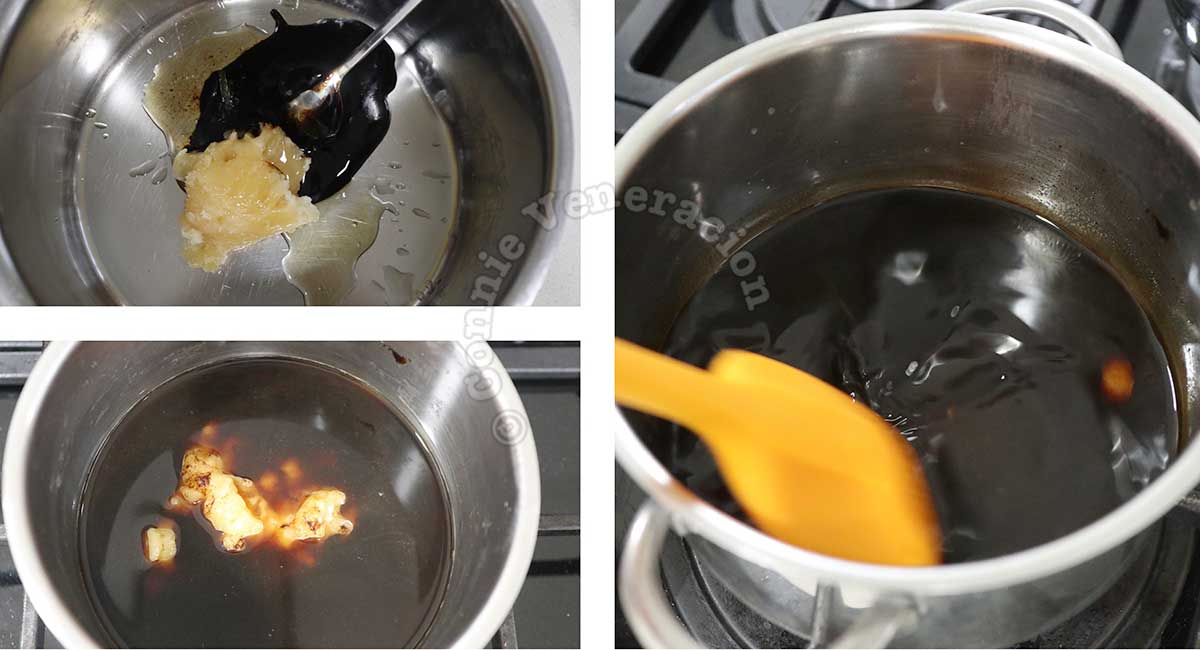
You boil them together with some water until it’s thick and syrupy. You let the sauce cool while you cook the eggs.
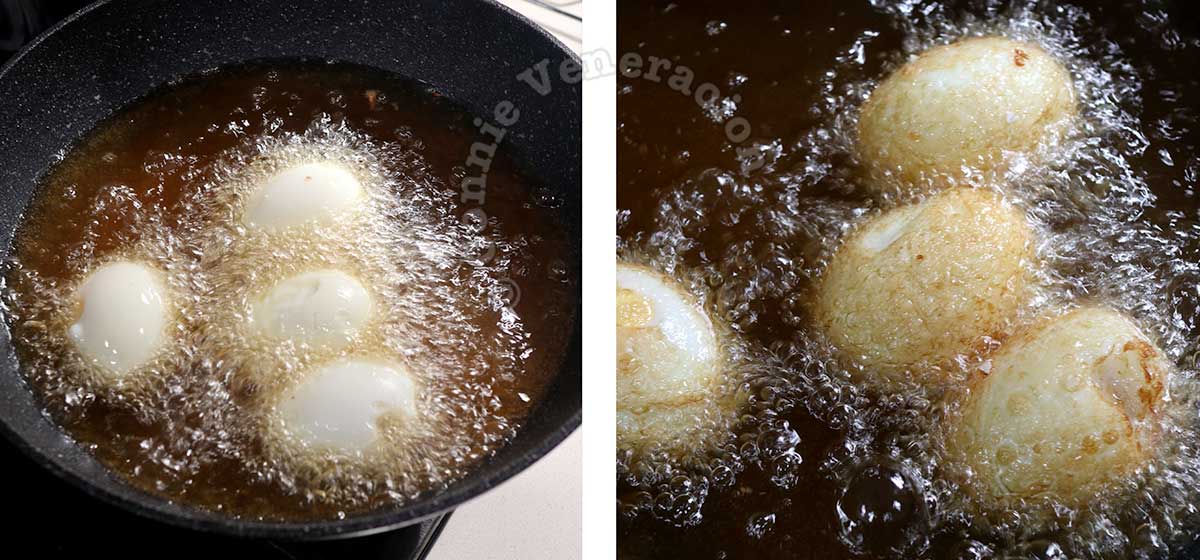
You need to wipe the hard-boiled eggs to remove surface moisture. This lessens the chance of oil spatter. A crust forms better too when the surface of the eggs is dry.
Heat at least three inches of oil in a pan and wait until it’s just starting to smoke. Slide in the hard-boiled eggs very carefully and cook them, rolling them in the hot oil, until the surface browns and a lace-like pattern develops.
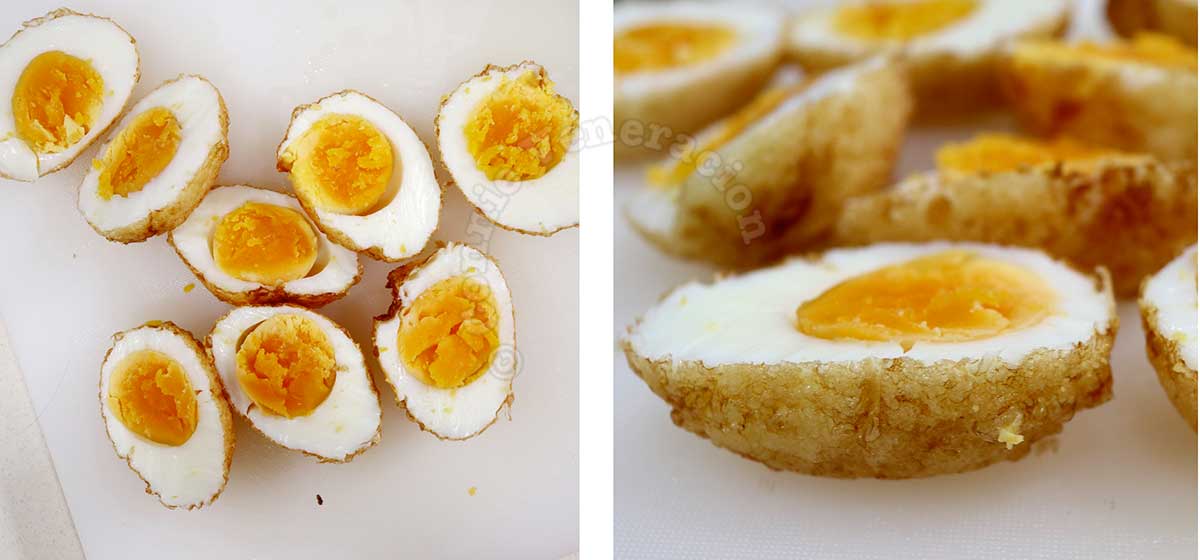
Scoop out the eggs and remove excess oil with paper towels. See that beautiful crust? Unbelievably good! Now, cut the eggs into halves to expose the yolks before arranging them on a plate.
You spoon the sauce over them and garnish. Fried shallots and garlic, and sliced fresh chilies are traditional.
Crispy fried shallots and garlic
Sprinkling crispy fried shallots and garlic over cooked food before serving isn’t merely about aesthetics. They add flavor, texture and aroma that give panache to many Southeast Asian dishes.
Son-in-law eggs (kai loog keuy)
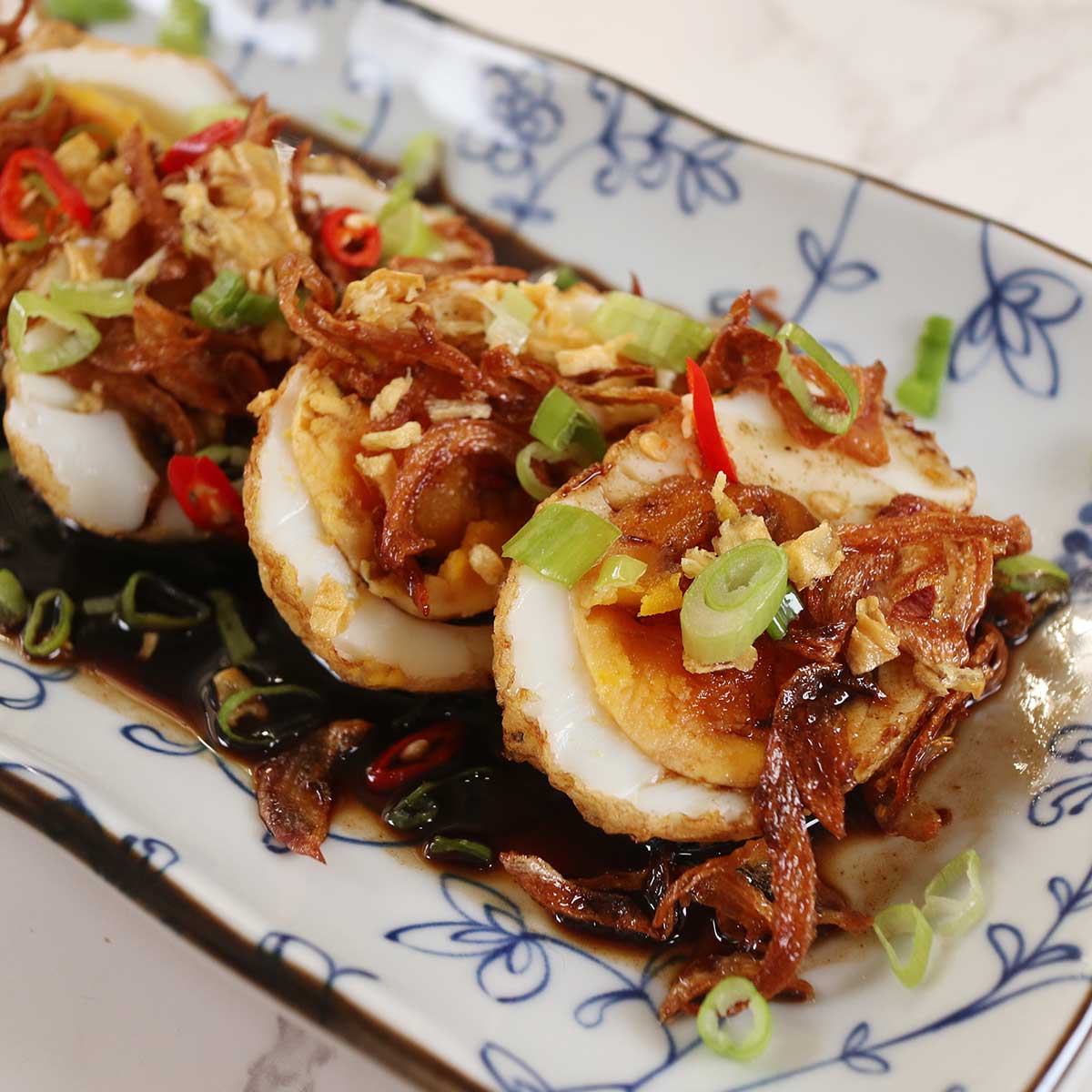
Ingredients
Sauce
- 2 heaping tablespoons tamarind paste
- 2 tablespoons palm sugar
- 1 tablespoon fish sauce
Eggs
- 4 eggs boiled and shelled
- cooking oil for deep frying
Garnish
- crispy fried shallots
- crispy fried garlic
- sliced scallions
- 2 bird's eye chilies thinly sliced (optional)
Instructions
Make the sauce
- Pour the tamarind paste and fish sauce in a small sauce pan, and add the palm sugar.
- Pour in a quarter cup of water and boil, uncovered, for about five minutes.
- Set the sauce aside to cool.
Fry the eggs
- In a wok, pour enough cooking oil to reach a depth of at least three inches.
- Wipe the eggs with paper towels to make sure there is no surface moisture.
- When the oil is just starting to smoke, carefully slide in the eggs.
- Roll them around in the hot oil to cook the surface evenly.
- When the egg whites are browned and blistered, scoop them out and lay on a stack of paper towels.
- Using a serrated knife, carefully slice the eggs into halves lengthwise.
- Arrange the egg halves, cut side up, on a serving plate (or on individual plates) and spoon the sauce over and around them.
- Top with crispy fried shallots and garlic and sliced scallions (and chilies, optionally).
- Serve your son-in-law eggs immediately.

